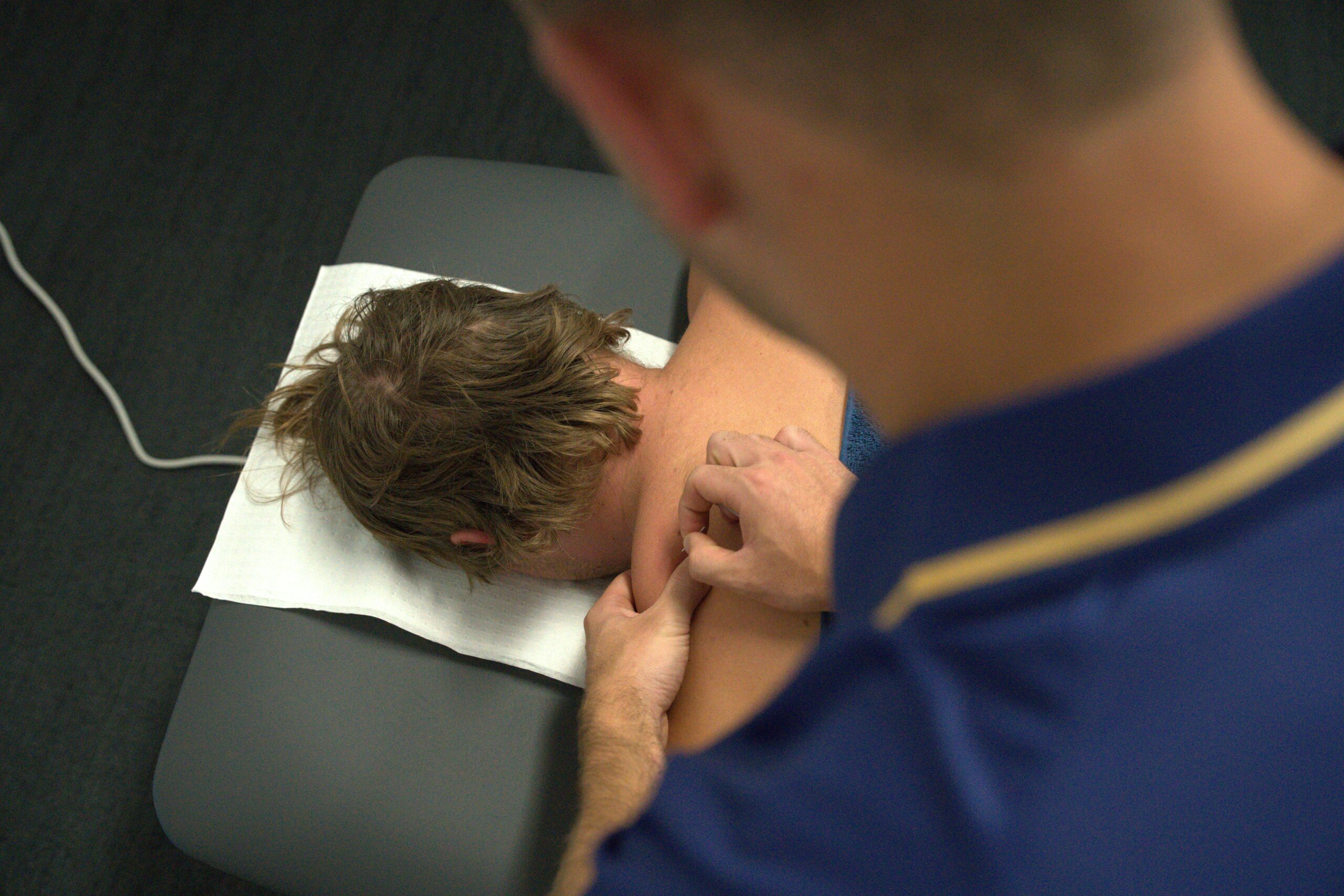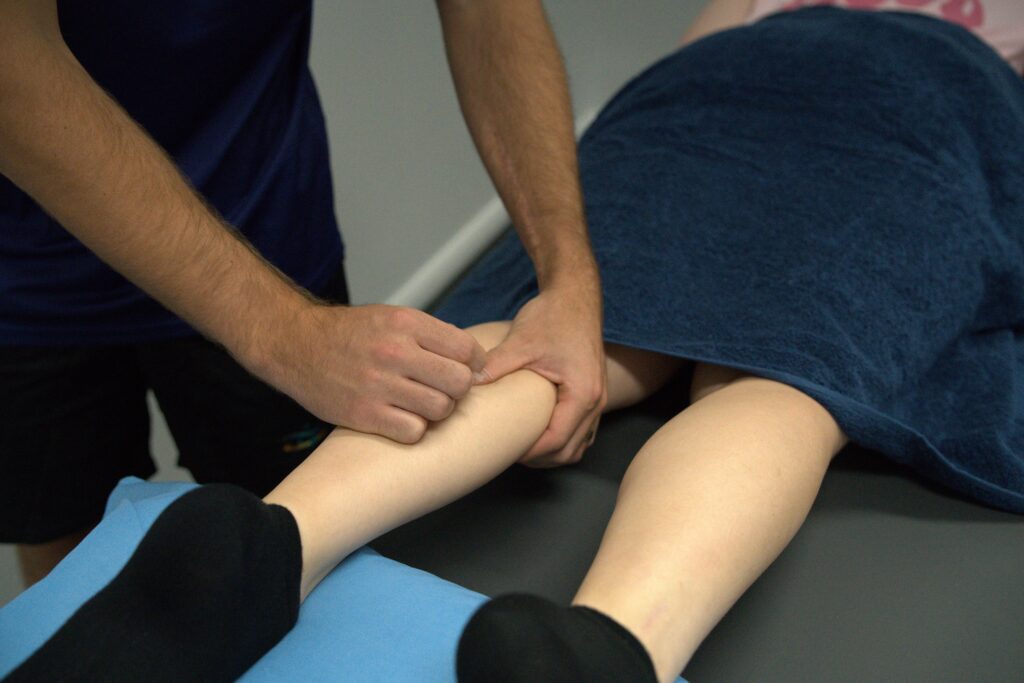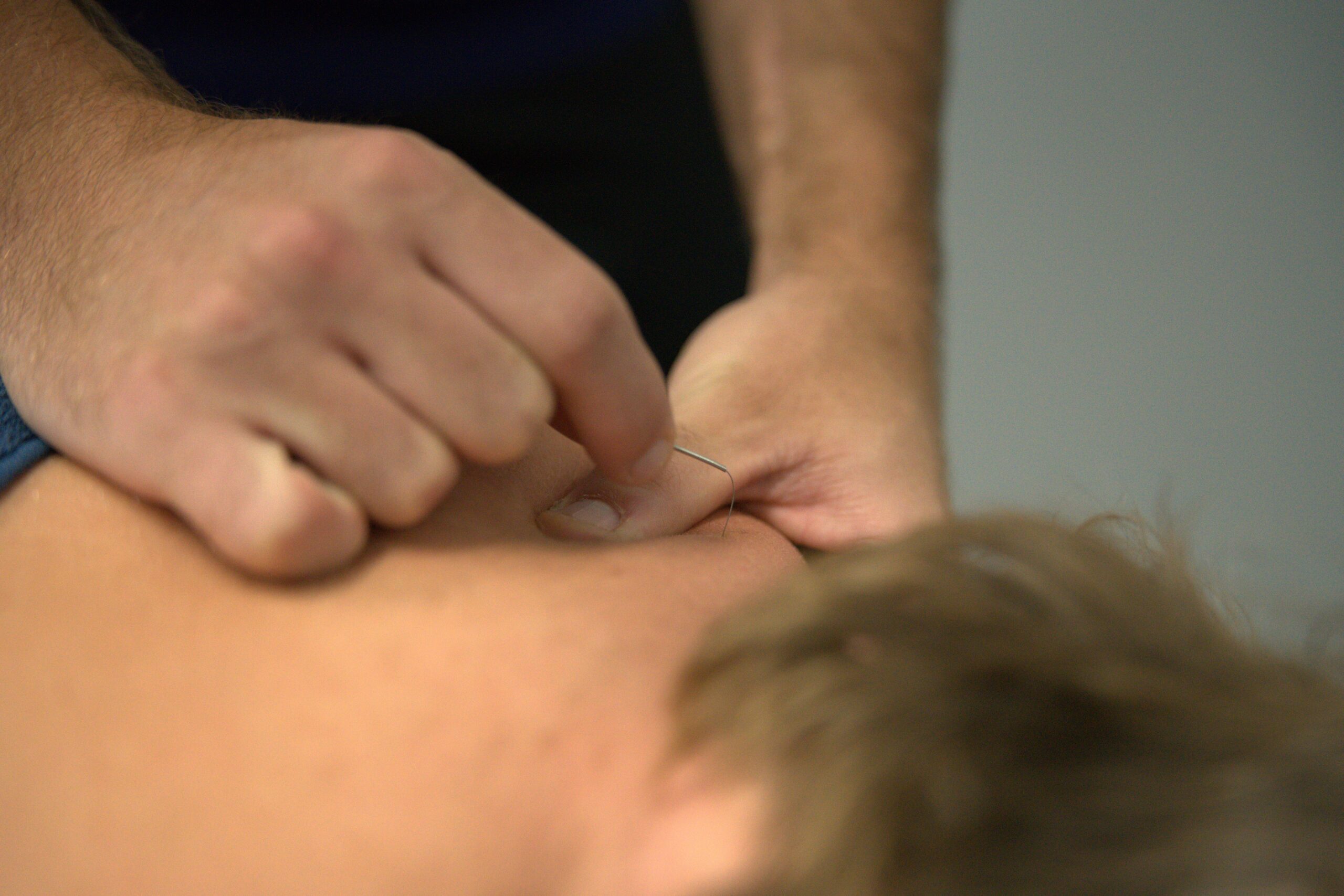Exploring the Benefits of Physio Dry Needling
Have you heard of dry needling? It's a cutting-edge technique physiotherapists use to relieve muscle pain and tension. The physiotherapist inserts thin needles into specific trigger points in your muscles for healing, improved function, and muscle relaxation.
Sounds like acupuncture, right? Well, it's a little different. Unlike traditional acupuncture, which is rooted in Eastern medicine and based on balancing energy flow, dry needling is rooted in Western medicine and targets musculoskeletal pain directly. The technique eases muscular pain and discomfort by releasing muscle knots and enhancing blood flow.
Not sure if it's right for you? Don't worry — we'll cover everything you need to know in the article below.
Read on to find out why dry needling is an effective solution for people suffering from muscular pain and sports injuries and how it'll relieve pain and improve mobility.
How Does Dry Needling Work?

What's the Process?
Before you even see any needles, there's a thorough assessment by a trained physiotherapist. They'll identify your areas of muscular pain and tightness.
During the dry needling treatment, the physiotherapist will insert thin, sterile acupuncture needles directly into specific trigger points within your muscles. These are solid filiform needles, not hollow, so they're safer for insertion.
When the needles are inserted, you may have a local twitch response, which is just a brief contraction of the needled muscle. This is a good sign! It means the targeted muscle is responding properly to treatment.
What's the Science?
Dry needling works by stimulating the underlying myofascial trigger points and muscular tissue in your affected area.
When the needles are inserted, they create a micro-lesion within your muscle, prompting your body's natural healing response. This process increases your blood flow, reduces inflammation, and releases tight bands of muscle fibres.
Remember that local twitch response we mentioned? That'll help to disrupt the cycle of pain and muscle spasms, bringing a quick end to muscle pain and improving your function. Plus, the increased blood flow brings essential oxygen and nutrients to the affected area to promote faster recovery.
Key Benefits of Dry Needling

Pain Relief and Reduced Muscle Tension
One of the biggest benefits of dry needling is the pain relief it brings.
Dry needling targets trigger points in your muscles to help them release tight bands of muscle fibres, alleviating your pain and discomfort.
This technique reduces your muscle tension, making it much easier to perform your daily activities and rehabilitation exercises so you can get back to sports and exercise without the constant burden of muscle pain.
Better Range of Motion and Faster Recovery
Dry needling also helps to improve your range of motion.
Because the treatment releases muscle tightness and reduces pain, people tend to experience an immediate improvement in their mobility. This is particularly good for athletes and people recovering from injuries, as dry needling accelerates the healing process.
Thanks to dry needling promoting quicker recovery times, you can get back to your regular activities and exercise much sooner.
Improved Circulation and Reduced Inflammation
Dry needling also has a very positive impact on your circulation.
When needles are inserted into your trigger points, it increases blood flow to your affected areas for quicker healing. This improved circulation delivers essential nutrients and oxygen to your tissues, helping to repair any damaged muscle fibres.
Plus, dry needling helps to reduce inflammation, which also supports the healing process. Talk about good support!
Who Can Benefit from Dry Needling?

Dry needling can be incredibly helpful to a wide range of people, from athletes to those suffering from chronic pain.
Many professional athletes use dry needling to treat their sports injuries and muscle tightness, all while enhancing their performance by improving mobility and reducing muscle tension.
People with chronic pain conditions, like lower back pain, neck pain, or headaches, can also find relief with dry needling. If you're recovering from surgery or injury, you might benefit from dry needling as part of your rehabilitation plan since it helps reduce pain and speeds up recovery.
Are There Side Effects?
Dry needling is generally considered to be safe, so long as it's performed by a trained and licensed physiotherapist.
The most common side effects are mild; they might include temporary soreness, light bruising, or very slight bleeding at the needle insertion sites. Rest assured, these side effects usually resolve very quickly, and they won't cause you any long-term issues.
In rare cases, some people experience dizziness or fainting, but this can be easily managed by your physiotherapist. If you have any medical conditions or anxiety around needles, it's important to tell your physiotherapist to make sure it's the right treatment for you.
Integrating Dry Needling into Your Recovery Plan
If you're considering adding dry needling to your recovery plan, you should start by discussing it with your physiotherapist.
Share your symptoms, your medical history, and any concerns you might have about the technique. At All Elite Physio, we'll assess your condition and determine whether dry needling is suitable for you and your needs.
We'll explain how dry needling can be integrated into your overall treatment plan, giving you a comprehensive way to manage your pain and improve your function.
What to Expect During Your First Session
During your first dry needling session, your physiotherapist will conduct a thorough evaluation to find the trigger points causing your pain.
They'll explain the procedure, answer any of your questions, and make sure you're completely comfortable with the process. To properly prepare, you should wear comfortable clothing that gives easy access to the treatment areas.
The session will involve inserting thin needles into the identified trigger points, which might cause a brief twitch response or even mild discomfort. Don't worry — that's perfectly normal, and it's actually an indication that the treatment is targeting the right area.
After your session, you might be a little sore, but this should go away very quickly. Your physiotherapist will give you tailored guidance on post-treatment care so you can maximise the benefits of dry needling.
The Healing Power of Dry Needling: What Can It Do For You?

Dry needling is a great way to alleviate your pain, reduce muscle tension, and improve your mobility.
By targeting specific trigger points, this therapy technique gives you immediate pain relief and promotes faster recovery from your injuries.
Whether you're an athlete, someone dealing with chronic pain, or you're simply trying to improve your physical well-being, dry needling can be a very valuable technique to add to your treatment plan.
All Elite Physio for Personalised Care and Recovery
Our expert team at All Elite Physio is dedicated to helping you achieve your health and fitness goals through personalised, evidence-based treatments.
If you're ready to experience the benefits of dry needling and comprehensive physiotherapy, get in touch with us today.
Contact the All Elite Physio team to schedule an appointment and take the first step towards a healthier, pain-free life.
